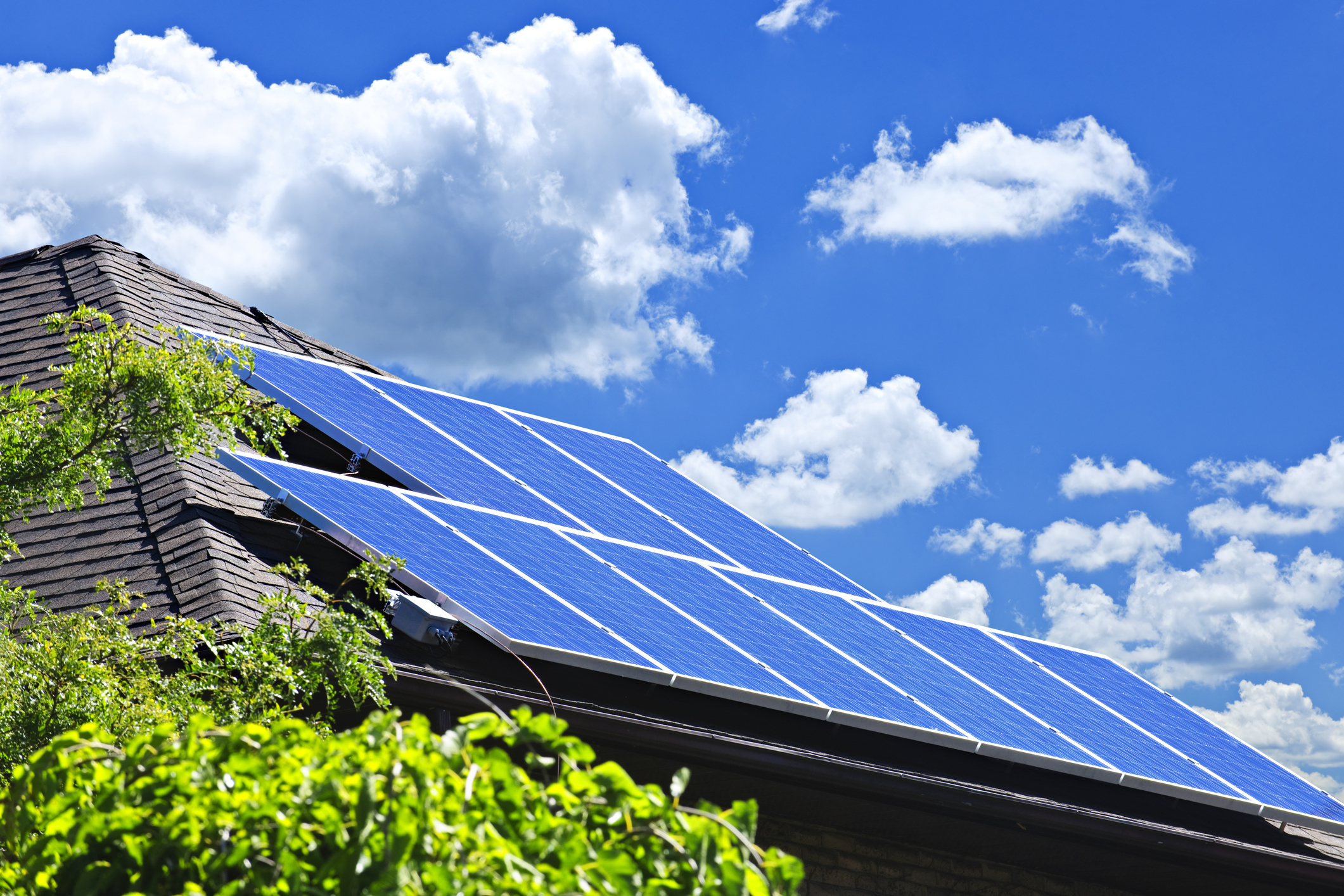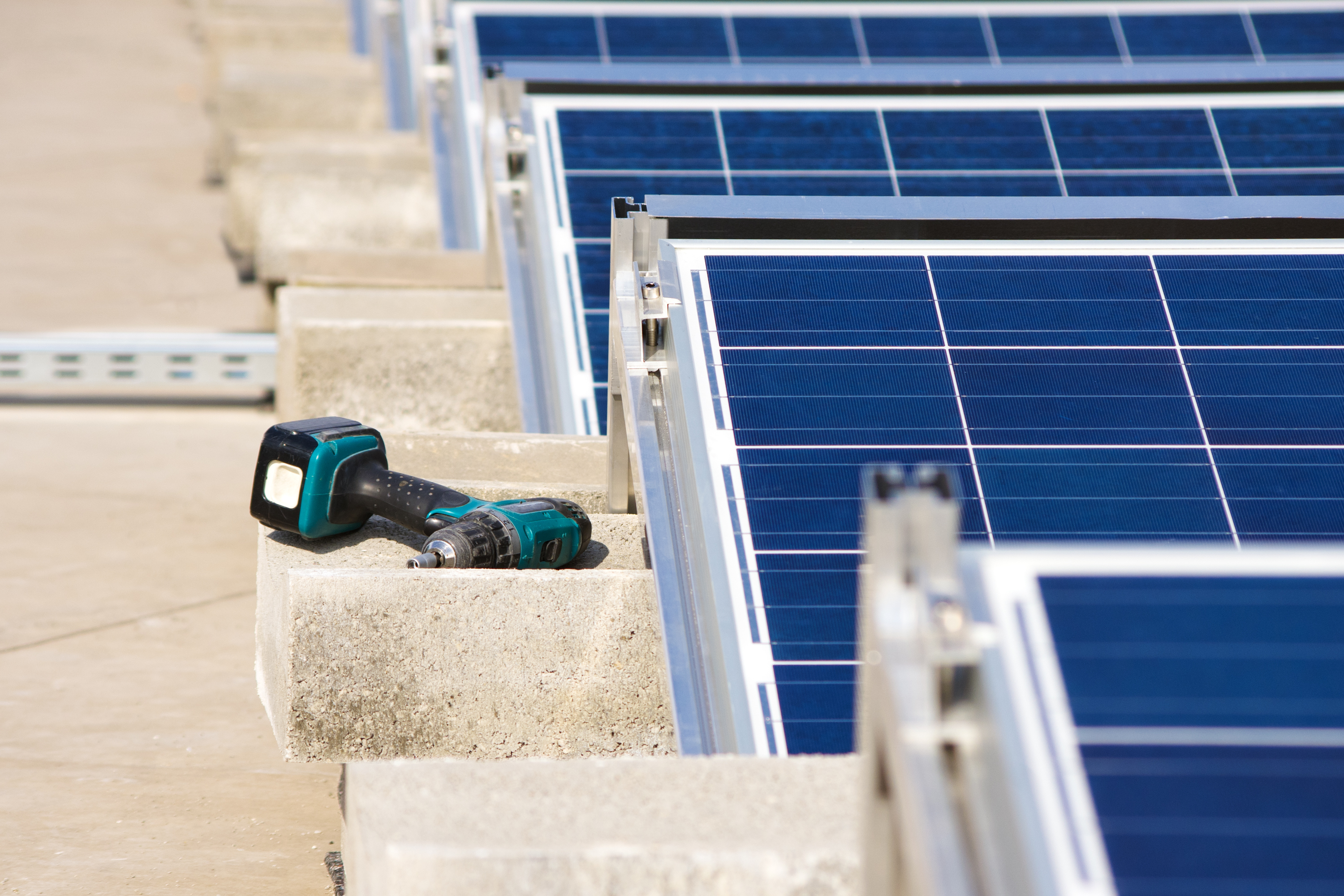Are you doing a solar project?
Modernize can pair you with three to four pros in your area, so you can compare options and save time and money.
Installing solar panels on your home can make you feel like you’ve traveled straight into the future (free energy from the sun? how next-level is that?), but sadly, your installation probably won’t move at warp speed.
Though most solar installations wrap up in a matter of weeks, if you happen to be dealing a particularly slow permitting office or utility provider, it can add lots of time to your project. Today, let’s take a look at all the variables that can affect your installation timeline. It may not be able to get your panels up any faster, but at least you’ll know what to expect!

Sales: Timelines Vary
Once you decide you’re serious about solar, your next move should be contacting a solar rep in your area. If you’ve found yourself a good solar provider with a solid reputation, they won’t make you wait around long—unless you need more time to make a decision, that is. A good salesperson should take their cues from you and answer all your regional-specific questions—everything from what it’s like to work with your utility provider to the average solar potential in your area.
Solar is a big investment, and it can take several years to pay off. Like any big decision, it’s best to weigh the pros and cons carefully before you dive in headfirst. You’ll probably want to check out your past utility bills, review your financing options, and go over the details of any incentive programs in your area. Likewise, you may want to have a new roof or energy-efficient HVAC system installed first, as well, or have an energy auditor out to check your home’s overall efficiency and performance.
On-Site Inspection: Up to Two Weeks
Your salesperson should next connect you with a site inspector—someone with a little more technical knowledge who can measure and inspect your roof for its solar potential. One thing they’ll check out is tree coverage—some homes are just too shady to benefit much from solar.
They’ll also look at how your roof is oriented. Is it facing due South where it will get lots of sunlight? Or is it due North where solar intensity is less extreme? Then they’ll look at the tilt to check how steeply pitched the slope of your roof is. They’ll also examine regional weather data and sunlight in your area to give you a more accurate understanding of your roof’s potential and what you’ll need to offset energy use for your home.
Financing: Up to a Few Weeks
Many homeowners choose to purchase their equipment upfront, in which case you can skip this and move on to the next section. However, considering that the average install costs around $25,000 when all is said and done, there’s a good chance you’ll be using some kind of financing to afford it.
Of course, the timeline for financing varies depending on who’s doing the lending. If your solar provider offers in-house financing, they could have you approved in a matter of minutes. If you’re using your bank or another lending option, however, it could take several weeks to secure your loan. You can usually add even more time to that if you’re borrowing against your mortgage or using your home to secure the loan, as you might through a lending agency like Fannie Mae. All in all, it just depends, so stay patient and don’t lose sight of all that free energy you’ll soon be generating!
Find the Right Contractor for Your Solar Project
Whether you’re ready to begin your project now or need some expert advice, our network of contractors are here to help. With a few simple questions, we’ll find the best local professionals for you
Permitting: Up to a Few Weeks
Here’s another timeline that’s hard to pin down with any certainty. Permitting could take you just a few hours—or it could take several weeks, depending on how fast your local building department moves.
Generally, though, expect a permit to take longer in a large city or suburb, especially if your permitting office is overloaded with requests. On the other hand, these larger agencies may have better systems in place to process applications quickly, while you might have to wait for the right person to get your form on their desk in a more rural town.

Installation: One to Three Days
Installation is actually one of the fastest parts of the whole process—most installers will tell you it only takes one to three days to get your panels mounted and connected. Most solar panel systems are what electricians call “plug-and-play,” meaning they’re made to snap together easily.
The greatest task, labor-wise, is usually installing the mounting system on your roof, particularly if your roof needs a mounting rack to achieve a better tilt or position. Still, that usually only adds a few hours to the job as a whole. Additionally, the installation make take just a tiny bit longer if you’re adding a battery or other storage system as well.
Hooking Up to the Grid: Up to Six Months
Usually, most homeowners are able to get the ball rolling on solar pretty quickly—solar salespersons and installers don’t like to drag their feet. Unfortunately, though, the same cannot be said for your utility, which may make you wait weeks or even months before they’ll give you the green light on your hookup.
If you’re signing up to participate in utility net metering, expect it to add time to your hookup, since your provider may need to process additional paperwork to sort through the financial details. Also, if you’re applying additional tax rebates or savings programs through your local government or your utility provider, you may witness slowdowns as well. Most of these programs are not short on takers, so there are sometimes waiting lists to get through before you can be approved.
At long last, a utility worker should visit your home to install a bidirectional meter (if your utility participates in net metering programs), and get you connected to the grid. After that, all you have to do is sit back and let the panels do their job!
Find the Right Contractor for Your Solar Project
Whether you’re ready to begin your project now or need some expert advice, our network of contractors are here to help. With a few simple questions, we’ll find the best local professionals for you
Reviews from Real Homeowners
Welcome to Homeowner Resources! We are the Modernize blog. Modernize pairs more than 3 million homeowners a year with pre-vetted contractors in their area. This blog started because we believe homeowners should know everything about their homes, from how their HVAC works to which front door colors they might love. On Homeowner Resources, you can find information on every part of your home, right down to how you can negotiate with contractors to get the best price. Here's more about the blog.
Need a contractor? Learn more about how Modernize finds the right pro for you.


